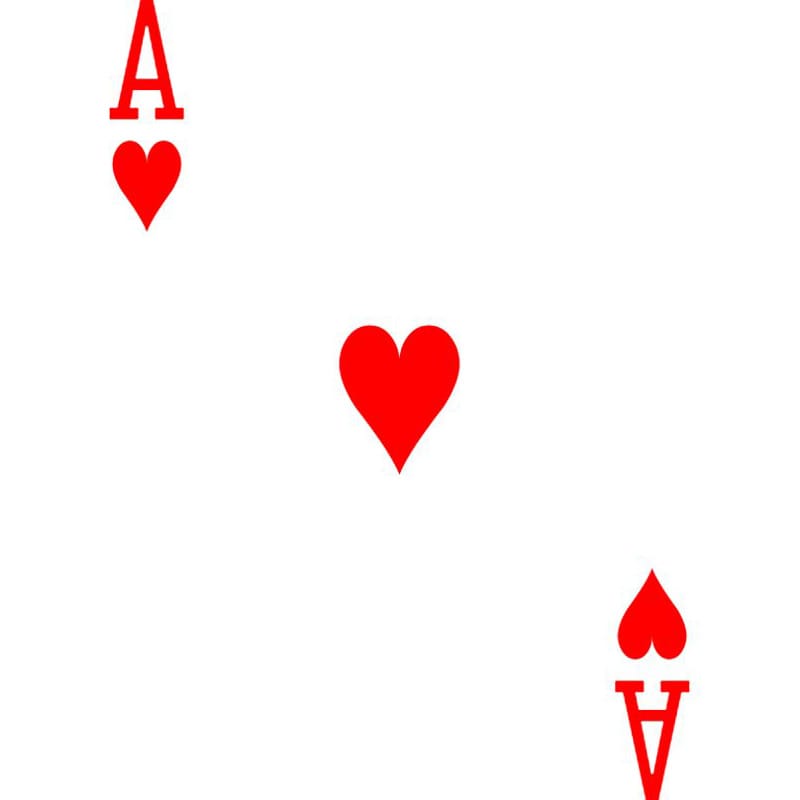Rooftop + Ritual: July 4th: From Moscow 1987 to Bushwick 2025
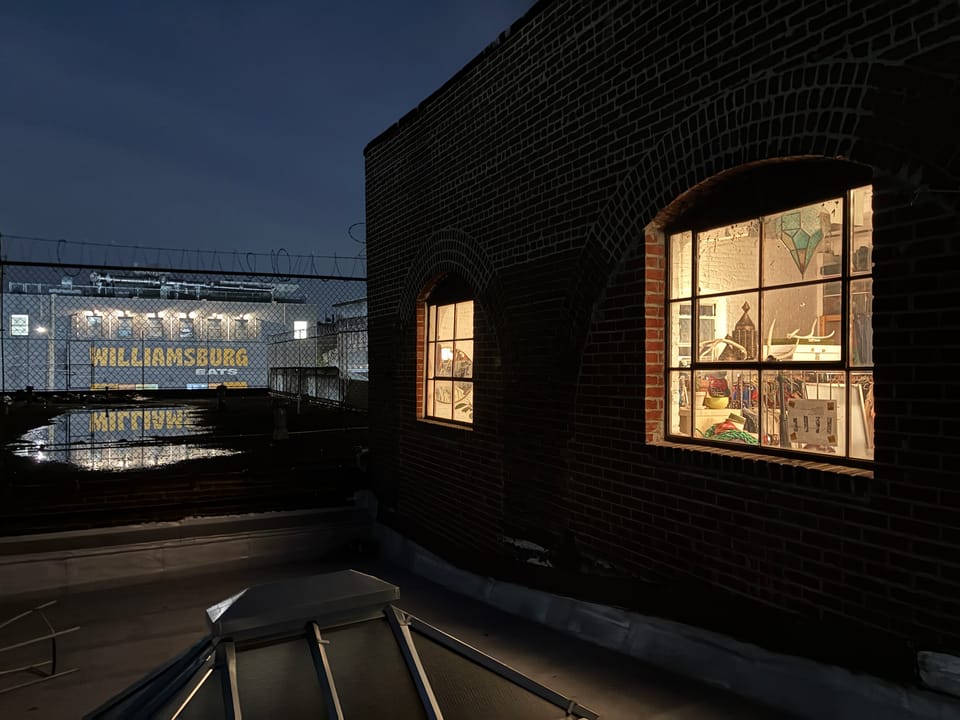
The air was still holding onto the heat. That kind of Brooklyn summer night where the pavement radiates back everything it absorbed during the day. I step onto the rooftop and the city is lit—not by fireworks, but by sodium streetlight, green graffiti glow, and the quiet ceremony of my own making.
With everything happening in the country, in the world, the holiday begins to take on even more insidious meanings. A celebration of our hard won right of individuality even when we haven't individuated from our parental colonizers. Kerosene thrown onto our own combustible souls by booze and pyrotechnics. For the last three decades of my life in America, I've always wondered exactly what does this holiday mean to those real Americans. Because for me, it was incidental, coincidental, happenstance, one of those things that just matched the calendar date by chance or fate. My family of four departed Moscow's Sheremetyevo airport for Rome's Fiumicino International Airport also known as the Leonardo da Vinci Airport. All we knew is we had permission to leave, a gate had opened for a spell and with two kids plus a massive German sewing machine and some clothes they could stuff in worn out leather suitcases, my parents fled as quickly as they could to get out of the narrow place.
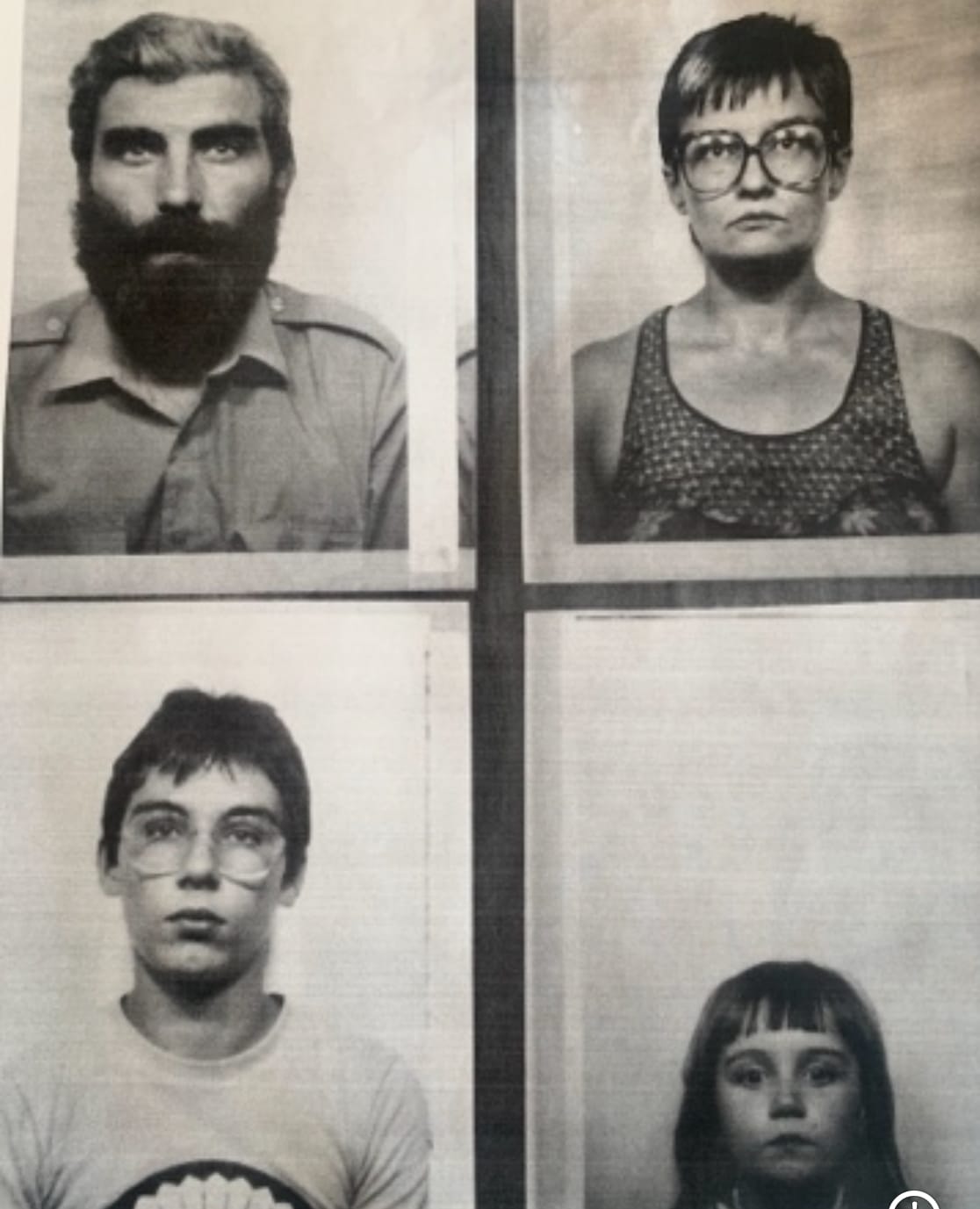
Dates mattered, more than just the 4th of July, America's sweetheart day of independence. It was three days before my older brother's 16th birthday which was the legal age of military conscription in the USSR. In 1987, Russia and Afghanistan were at the height of détente, and boys were being slaughtered from both sides. To have the opportunity to leave right there and then wasn't just divine luck, it was a gateway towards survival. It meant no looking back, not even when my mother realized she'd lost one leather boot and one leather belt somewhere between various customs procedures. Perhaps part of my own mythopoetic evolution, but I believe my burgeoning boot fetish and belt collection started right there and then. Thirty eight years later, as the heat of the holiday grew beyond 90, I carefully arranged each belt on a peg board, thinking about the events of that month in 1987.
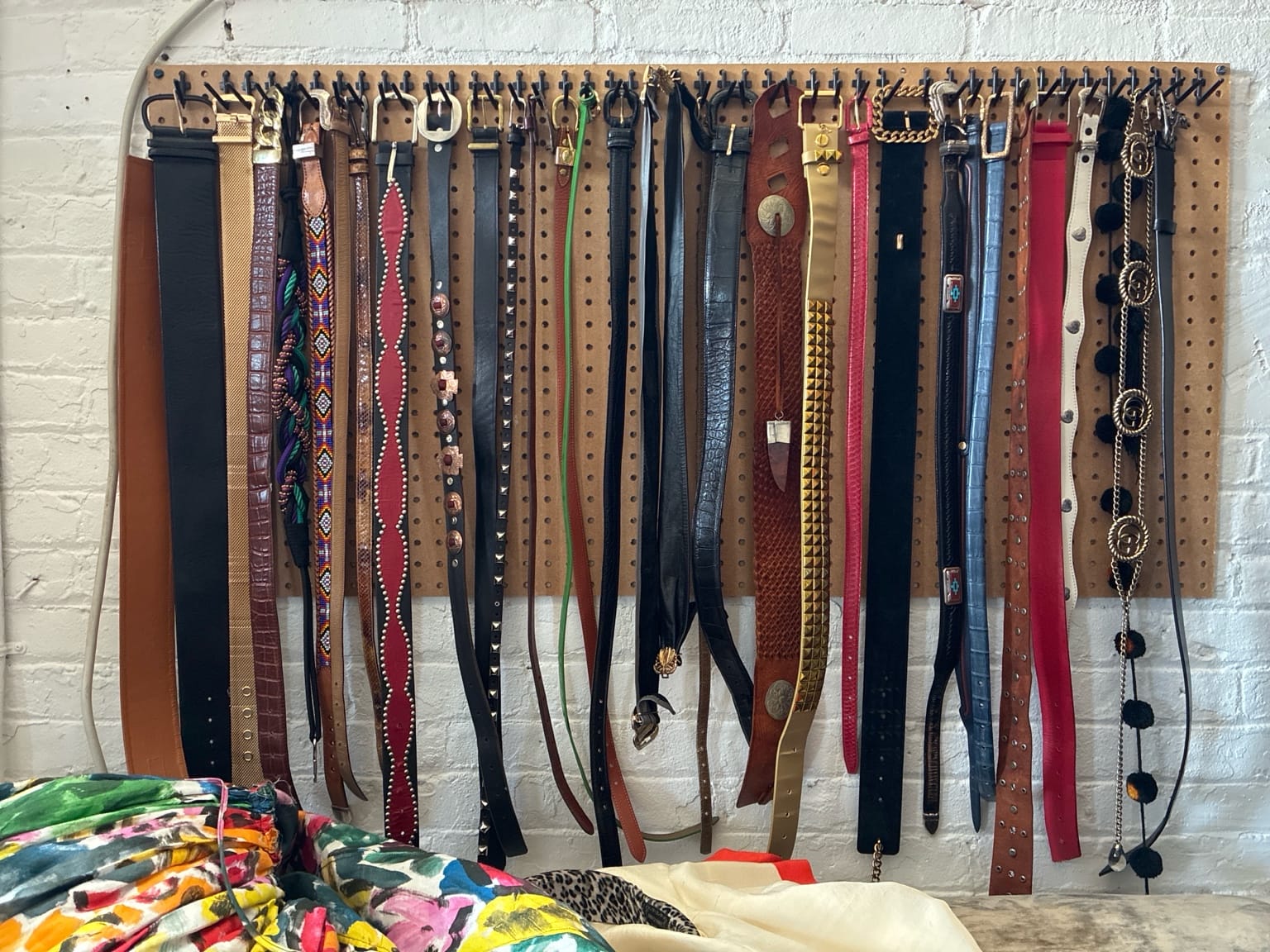
I'm not up here to celebrate America. I'm up here to mark something far older, far deeper. The sky above Bushwick looks nothing like Moscow. But I remember the shape of leaving, and as I blow out the five candles in a melting pound cake in front of me, I start to cry. It gets me every time. I blow the candles out slowly.
Not for a wish, but for continuity and for the continuously embedded memory of what almost wasn't, of the minuscule proximity to a very different fate.
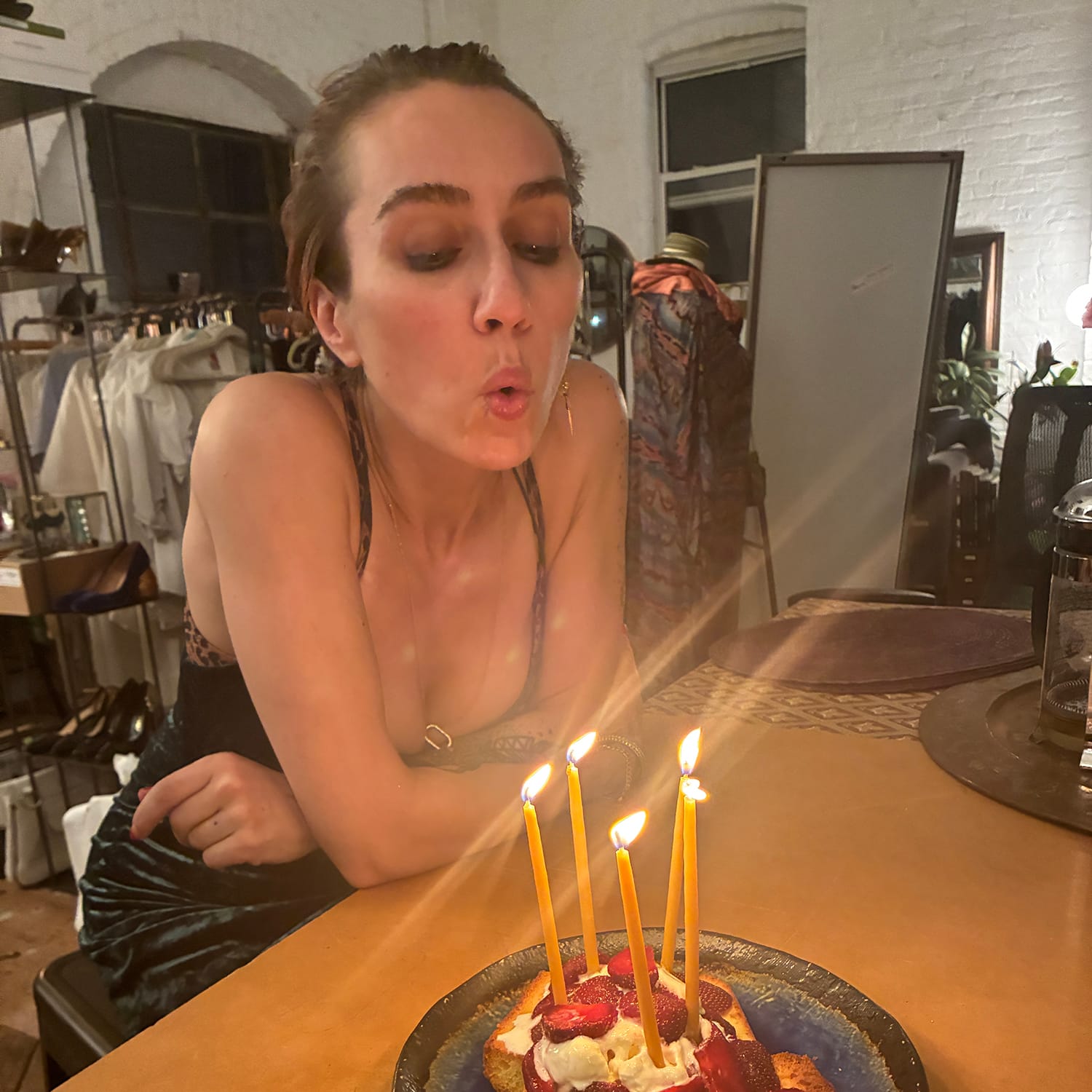
The heat stays with me long after the candles go out. My back sticks slightly to the velvet, and I feel the press of the rope necklace across my collarbone like a harness—self-fashioned, ceremonial. I think of my mother’s missing belt. The one she never recovered. The boot that never made it out of the airport.
This body did make it out. And every year I mark that fact with intention. The belts on the pegboard. The thread in my palm. The cowboy boots from Singapore. These aren’t accessories. They’re altars. Every object in this studio holds a charge—style as memory, velvet as testimony, pink as rebellion against the greys of elsewhere, a Soviet past I was told I was saved from.
I don’t celebrate July 4th for what this country claims to be. I celebrate it for what we almost weren’t. For what we slipped through. For the fact that my brother never got a draft notice. For the cake I never had, and now do. For the girl in the photograph, and the woman she became—who lights five candles, in an intimate private, setting, in a city of brick and noise, and chooses again to stay.
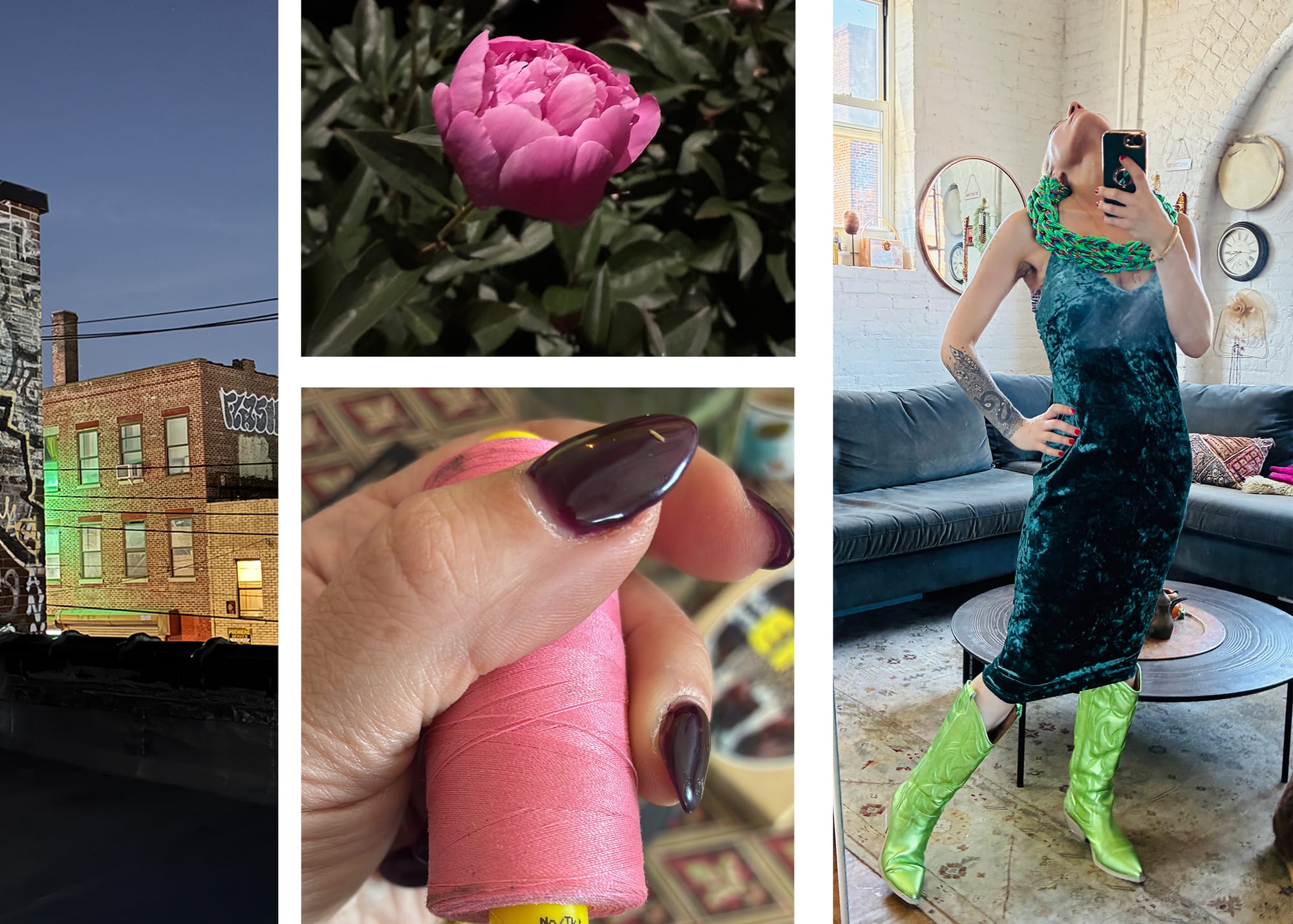
For the rooftop. For the memory. For the girl who stayed.
